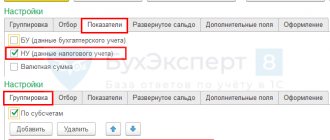Reduction of VAT on fruits and berries from 20% to 10%
HomeNewsLegislation Reduced VAT on fruits and berries
Decree of the Government of the Russian Federation of December 31, 2021 N 1952 put an end to the reduction of VAT from 20% to 10% on fruits and berries, including grapes. Fruits and berries (including grapes) has been added to the list of product codes subject to VAT of 10% in Decree of the Government of the Russian Federation of December 31, 2004 N 908 . This section is included both in the list of codes for types of food products in accordance with the All-Russian Classification of Products (OKP), and in the list of codes for types of food products in accordance with the Commodity Nomenclature of Foreign Economic Activity of the EAEU.
1. Section included in the list of product codes in accordance with OKP.
| Fruits and berries (including grapes) | |
| 01.13.21 | Watermelons |
| from 01.13.29 <*> | Melons |
| 01.21 | Grape |
| 01.22 <*> | Tropical and subtropical fruits (except bananas, including fresh plantains) |
| 01.23 | Citrus fruits |
| 01.24 | Fruits of pome and stone fruits |
| 01.25.1 | Berries and fruits of plants of the Vaccinium species |
| 01.25.2 | Fruit seeds |
| 01.25.9 | Other fruits of trees and shrubs, not included in other groups |
| 01.30.10.123 | Seedlings of berry crops |
| 01.30.10.130 | Fruit and berry crops, including cuttings and layering |
| 01.30.10.131 | Pome fruit crops |
| 01.30.10.132 | Stone fruit crops |
| 01.30.10.133 | Berry crops |
| 01.30.10.136 | Grapes (berry crop) |
| 01.30.10.139 | Other fruit and berry crops |
| 02.30.40.120 | Wild berries |
<*> For the purposes of applying this position, one should be guided by both the OK code 034-2014 and the name of the product.
2. Section included in the list of product codes in accordance with the unified Commodity Nomenclature of Foreign Economic Activity of the EAEU
Fruits and berries (including grapes)
| HS Code | Fruits and berries |
| Dates, figs, pineapples, avocados, guavas, mangoes and mangosteen, or garcinia, fresh | |
| from 0804100000 | fresh dates |
| 0804201000 | fresh figs |
| 0804300001 | fresh pineapples |
| from 0804400000 | fresh avocados |
| 0804500001 | fresh guava, mango and mangosteen, or garcinia |
| Citrus fruits, fresh | |
| 0805102000 | sweet oranges, fresh |
| 0805108000 | other oranges, fresh |
| 0805210000 | tangerines (including tangerines and satsumas), fresh |
| 0805220000 | fresh clementines |
| 0805290000 | Wilkings and similar citrus hybrids, fresh |
| 0805400000 | grapefruits, including pomelo, fresh |
| from 080550 | lemons (Citrus limon, Citrus limonum) and limes (Citrus aurantifolia, Citrus latifolia), fresh |
| from 0805900000 | other citrus fruits, fresh |
| Grape | |
| 080610 | fresh grapes |
| Watermelons, melons and papaya, fresh | |
| 0807110000 | fresh watermelons |
| 0807190000 | other fresh melons |
| 0807200000 | fresh papaya |
| Apples, pears and quinces, fresh | |
| 080810 | apples |
| 080830 | pears |
| 0808400000 | quince |
| Apricots, cherries and sweet cherries, peaches (including nectarines), plums, sloe, cherry plum (tkemali, cherry plum), fresh | |
| 0809100000 | fresh apricots |
| 0809210000 | sour cherry, or common cherry (PRUNUS CERASUS), fresh |
| 0809290000 | sour cherry (PRUNUS CERASUS), other |
| 0809301000 | fresh nectarines |
| 0809309000 | other fresh peaches |
| 0809400500 | fresh plums |
| 0809409000 | fresh sloe |
| Strawberries (strawberries), raspberries, blackberries, black, white or red currants, gooseberries, cranberries, blueberries and other berries of the genus Vaccinium, kiwi, persimmon, barberry, dogwood, pomegranate, feijoa, medlar, other fruits, wild berries, fresh | |
| 0810100000 | strawberries (strawberries) fresh |
| 0810201000 | fresh raspberries |
| from 0810209000 | fresh blackberries |
| 081030 | black, white or red currants and gooseberries |
| 081040 | cranberries, blueberries and other berries of the genus Vaccinium |
| 0810500000 | kiwi |
| 0810600000 | durian |
| 0810700000 | persimmon |
| 0810902000 | tamarind, cashew, lychee, jackfruit, sapodilla, passionflower, carambola and pitaya |
| from 0810907500 | barberry, dogwood, pomegranate, feijoa, medlar, other fruits, fresh |
| from 0810 | wild berries, fresh |
| Seeds, seedlings, roots, cuttings and layerings of fruit and berry crops (including grapes) | |
| from 0602 | roots, cuttings and layering of fruit trees (including grapes), shrubs, shrubs, seeds and seedlings of berry crops |
| out of 1209 | fruit tree seeds |
The law applies to all trade relations starting from October 1.
Before the changes were made, the application of a 10% tax was risky, since there were no names and codes of types of fruits and berries in the list of OKP and in the list of HS. Now all market participants can be sure that VAT on these fruits and berries will be 10%.
Please note that bananas are not included in the list; in addition, the 10% VAT rate no longer applies to palm oil.
Recommended articles:
- VAT when paying customs duties
- Customs clearance of fruits and vegetables
VAT 2021: tax rates
In 2021, there are several basic rates for calculating VAT - 20%, 10% and 0%, and several calculated rates - 20/120, 10/110 and 16.67%, which are used depending on the type of transaction:
- 20% is the general rate that applies to most transactions (clause 3 of Article 164 of the Tax Code of the Russian Federation). At this rate, tax transactions that are not specified in the Tax Code of the Russian Federation as grounds for applying other rates;
- 10% is the rate at which tax is calculated on the import and sale of certain goods, as well as on the sale of certain services. In paragraph 2 of Art. 164 of the Tax Code of the Russian Federation indicates goods and services, and in the lists approved by the Government of the Russian Federation - codes of goods (clause 2 of Article 164 of the Tax Code of the Russian Federation);
- 0% – applies to exports, international transport and other operations listed in clause 1 of Art. 164 Tax Code of the Russian Federation;
- 20/120 or 10/110 are estimated rates that are used in cases where the tax base includes VAT. The main cases are listed in paragraph 4 of Art. 164 Tax Code of the Russian Federation. For example, receiving advances, withholding VAT by a tax agent. A settlement rate of 20/120 or 10/110 is applied depending on the rate at which the main transaction is taxed;
- 16.67% is a special settlement rate, which is applied only in two cases: when selling an enterprise as a whole as a property complex and when foreign companies provide services to individuals in electronic form (clause 4 of article 158, clause 5 of article 174.2 of the Tax Code RF).
Rate 10 percent in 2019
The VAT rate of 10% is applied when importing into the Russian Federation and selling on its territory a limited range of socially significant goods. Their list is established in paragraph 2 of Art. 164 Tax Code of the Russian Federation. And the lists approved by the Government of the Russian Federation contain specific names of goods and codes of their types.
If the name and code of your product coincide with that specified in the list, then a rate of 10% is applied (Letter of the Ministry of Finance of Russia dated 04/03/2018 No. 03-07-07/21499). Therefore, before applying this rate, make sure that the products being sold are on these lists.
Also, until December 31, 2021 inclusive, the VAT rate of 10% is also applied to the sale of services for domestic air transportation of passengers and baggage (except for the services specified in clauses 4.1, 4.2, clause 1, article 164 of the Tax Code of the Russian Federation).
Calculation part
It is logical to assume that if the rate of “input” VAT is 20% (This assumption is conditional. For example, the import of breeding livestock is not subject to VAT, and the sale of compound feed is taxed at a rate of 10%.), and the rate of “output” VAT is 10%, then under certain conditions no additional tax is due.
To see the effect of the difference in rates, let's simulate an example. Let the revenue be 50 million rubles, VAT on revenue (10%) is 5 million rubles. If the share of material costs subject to VAT in revenue is 50% (25 million rubles), then VAT at a rate of 20% will be 5 million rubles. Under these conditions, there will be no tax payable (“input” tax is equal to “output”). Thus, if the share of material costs exceeds half of the revenue, it is more profitable to remain a VAT payer.
Let's change the conditions a little. To maintain the right to work in a special regime in the form of unified agricultural tax, it is necessary to maintain the share of agricultural products at a level of at least 70% of total revenue ( Article 346.2 of the Tax Code of the Russian Federation ). Returning to our example, let's say that the company is operating at the limit. Then the revenue subject to VAT at a rate of 10% will be 35 million rubles. (RUB 50 million x 70%), VAT, respectively, RUB 3.5 million. Revenue subject to VAT at a rate of 20% is 15 million rubles. (50 - 35), VAT - 3 million rubles. Total VAT on sales (“output” tax) will be equal to 6.5 million rubles. In this case, in order to avoid additional tax payment to the budget, material costs should be 32.5 million rubles. or 65% of revenue. “Input” VAT in this case will be the same 6.5 million rubles. (50 million rubles x 65% x 20%), which resets the tax payable to the budget.
From the diagrams we move on to a detailed calculation of the tax burden for various work options.
Conclusions from the table
For all options, the tax burden is small, which is explained by the use of a low-tax regime in the form of the unified agricultural tax and a preferential VAT rate of 10%. Much stronger discrepancies are observed in the amount of profit remaining at the disposal of the enterprise.
Ultimately, a low tax burden is not an end in itself; it is more important to obtain maximum profit. Under these circumstances, the standard scheme for working with VAT looks like a very acceptable option. There is no point in reducing selling prices by the amount of VAT; this critically reduces profits. And it’s not a fact that potential wholesale buyers will appreciate such a step. If the sale is retail, then it is beneficial to exempt yourself from VAT and get the highest profit.
List of goods at a rate of 10% in 2019
The VAT rate of 10% is applied when selling the following categories of goods (clause 2 of Article 164 of the Tax Code of the Russian Federation):
- food products that are listed in paragraphs. 1 item 2 art. 164 of the Tax Code of the Russian Federation, for example meat, milk, eggs, fish, cereals, pasta, vegetables, baby and diabetic food products;
- products for children listed in paragraphs. 2 p. 2 art. 164 Tax Code of the Russian Federation. These include, but are not limited to, children's clothing and shoes, children's beds and mattresses, toys;
- periodicals and books related to education, science and culture. Periodical printed publications include any publications with a permanent name and current number that are published once a year or more often (newspapers, magazines, almanacs, bulletins, etc.) (clause 3, clause 2, article 164 of the Tax Code of the Russian Federation). To confirm the VAT rate of 10%, you must have a certificate issued by Rospechat (clause 2 of the Notes to the List of types of periodicals and book products, approved by Decree of the Government of the Russian Federation of January 23, 2003 N 41). The VAT rate of 10% does not apply to the sale of periodicals and books of an erotic or advertising nature, when advertising is more than 45% of the total volume of one issue (clause 3, clause 2, article 164 of the Tax Code of the Russian Federation);
- The list of medical goods that are subject to VAT at a rate of 10% is indicated in paragraphs. 4 p. 2 tbsp. 164 Tax Code of the Russian Federation. These are goods of both domestic and foreign production: – medicines (including medicines manufactured by pharmacy organizations); – medical products (except those exempt from VAT).
Source: Consultant Plus
Input data
Annual revenue excluding VAT - 50 million rubles. The share of products taxed at a VAT rate of 10% is 75%, and at a VAT rate of 20% is 25%. Material costs, subject to VAT at a rate of 20%, excluding tax, amount to 30 million rubles. Salary with deductions - 10 million rubles.
The company analyzes whether VAT exemption will be beneficial and decides what pricing policy to choose for customers in case of VAT waiver.
Comparative efficiency of work with (without) VAT (thousand rubles)
| Indicators | Calculation method | VAT INCLUDED | Without VAT, prices reduced | Excluding VAT, prices not reduced |
| Revenue from agricultural products | Page 1 = 50,000×75%, or Page 1 = 50,000×75% x 1.1 | 37 500 | 37 500 | 41 250 |
| VAT 10% | Page 2 = page 1×10% | 3 750 | — | — |
| Other revenue | Page 3 = 50,000×25%, or Page 3 = 50,000×25% x 1.2 | 12 500 | 12 500 | 15 000 |
| VAT 20% | Page 4 = page 3×20% | 2 500 | — | — |
| Total revenue excluding VAT | Page 5 = page 1 page 3 | 50 000 | 50 000 | 56 250 |
| Total revenue including VAT | Page 6 = page 1 page 2 page 3 page 4 | 56 250 | 50 000 | 56 250 |
| Costs (fuels and lubricants, fertilizers, etc.) | Page 7 | 30 000 | 30 000 | 30 000 |
| VAT 20% | Page 8 = page 7×20% | 6 000 | 6 000 | 6 000 |
| VAT payable | Page 9 = page 2 page 4 - page 8 | 250 | — | — |
| Salary with insurance contributions | Page 10 | 10 000 | 10 000 | 10 000 |
| Profit | Page 11 = page 1 page 3 - page 7 - page 10, or Page 11 = page 1 page 3 - page 7 - page 10 - page 8 | 10 000 | 4 000 | 10 250 |
| Unified agricultural tax rate (%) | Page 12 | 6 | 6 | 6 |
| Unified agricultural tax | Page 13 = page 11 x page 12 | 600 | 240 | 615 |
| Tax burden | Page 14 = page 9 page 13 | 850 | 240 | 615 |
| Net profit | Page 15 = page 11 - page 13 | 9 400 | 3 760 | 9 635 |
| Tax burden (%) | Page 16 = page 14 / page 15 | 9,0 | 6,4 | 6,4 |
Explanations for the table. Three options are presented:
1) with payment of VAT;
2) without VAT and a reduction in prices by the amount of tax (break-even is ensured for wholesalers and manufacturers);
3) without VAT with prices kept at the same level (the price remains indifferent for the end consumer).
Line 1 shows revenue subject to VAT at a rate of 10%, line 3 shows revenue subject to VAT at a rate of 20%.
Profit ( line 11 ) is calculated by deducting expenses from income. When working without VAT, the costs include “input” VAT.
The absolute tax burden ( line 14 ) consists of VAT and Unified Agricultural Tax. Relative tax burden ( line 16 ) shows the ratio of total taxes to net income.





